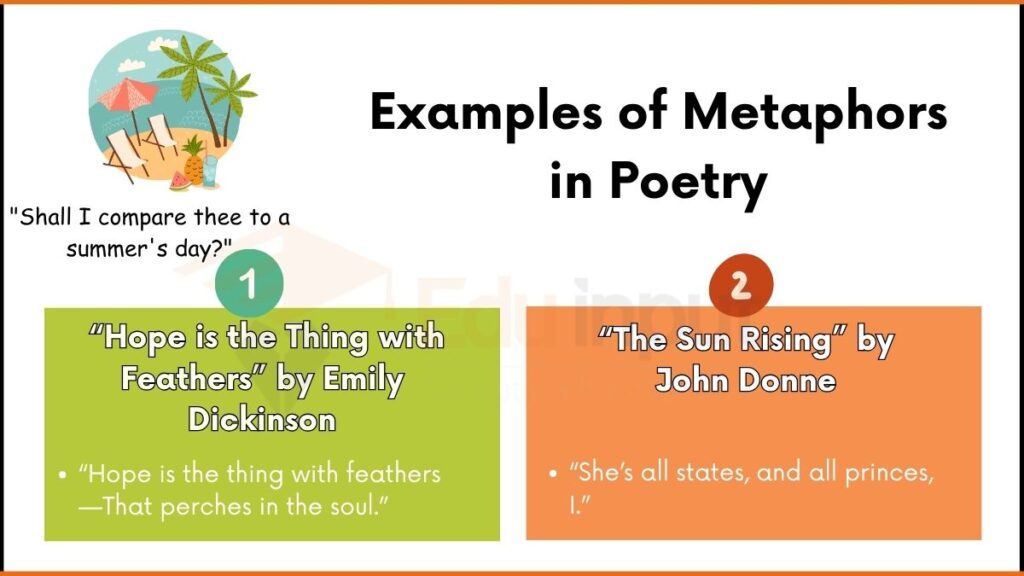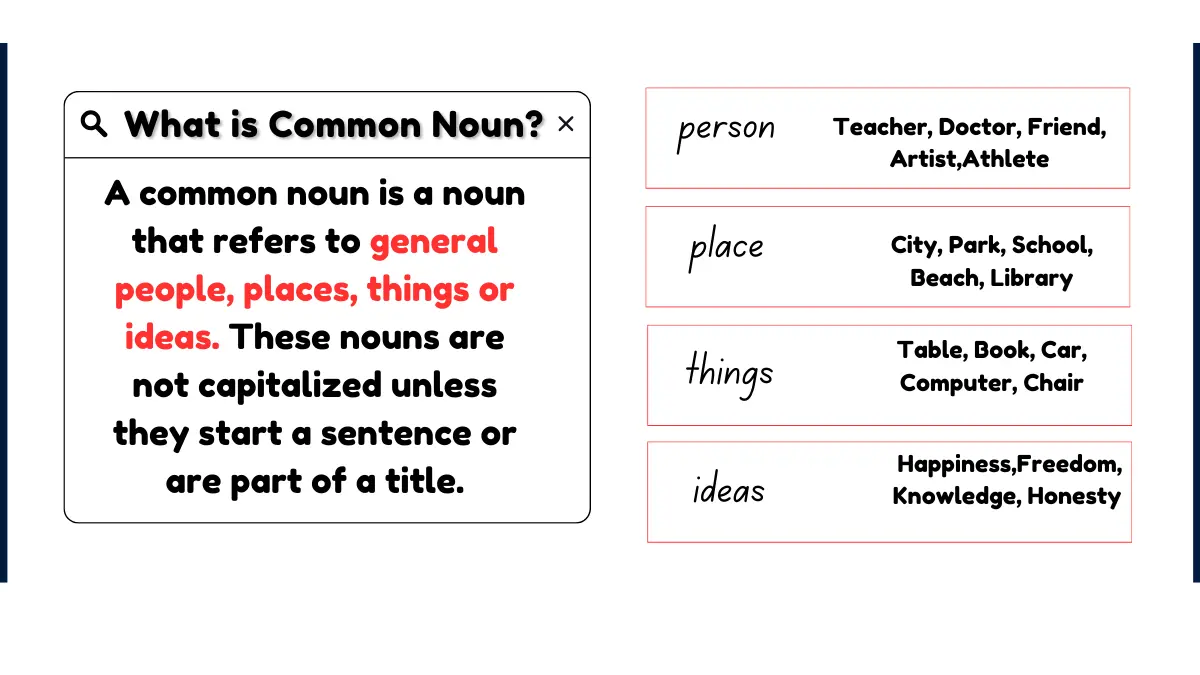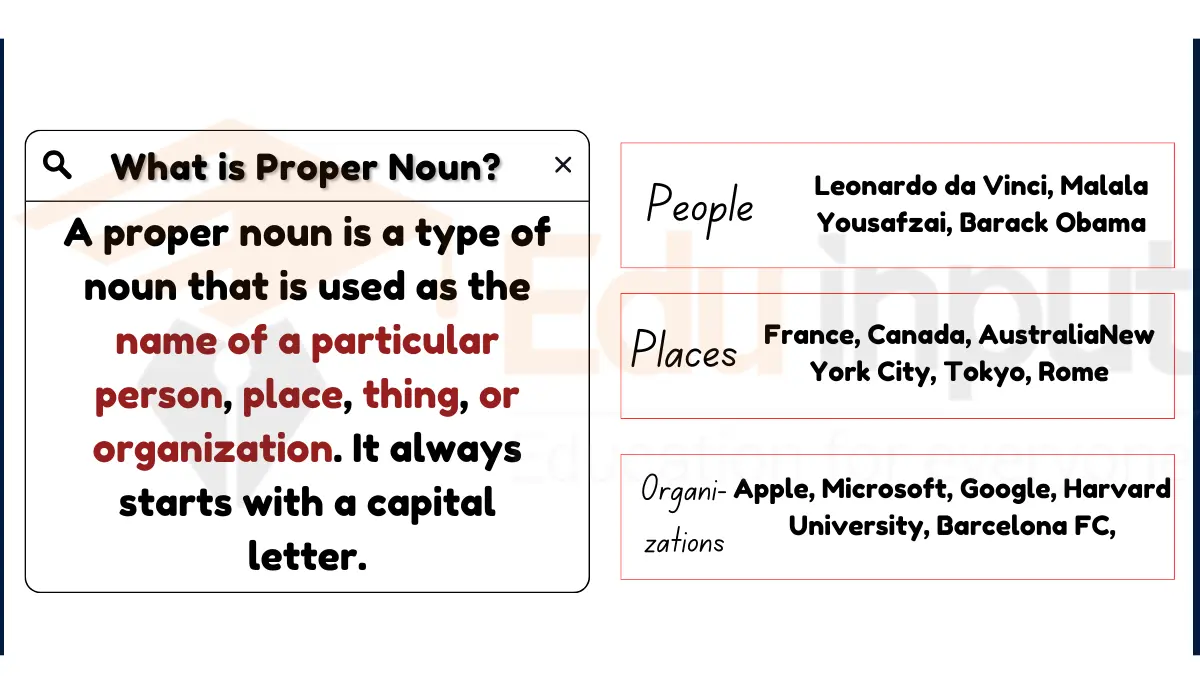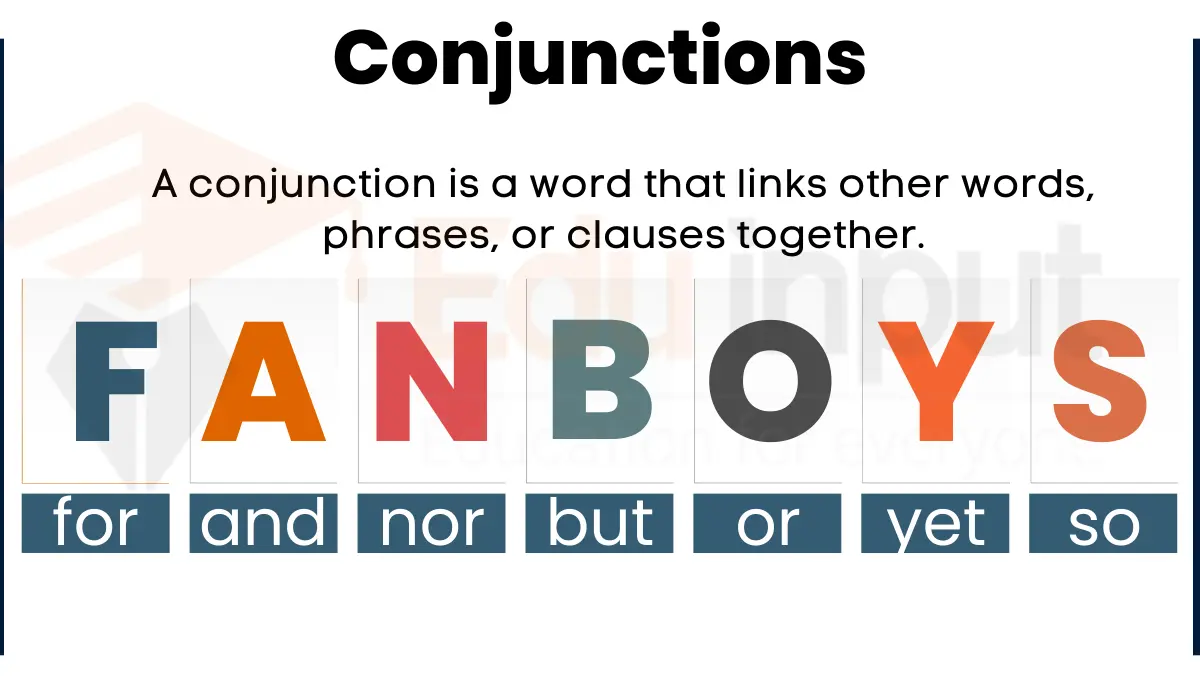25 Examples of Metaphors in Poetry
Metaphors are powerful tools in poetry. They help poets express big feelings and ideas by comparing two different things. These comparisons create deeper meaning and make poems more intense. Here are 25 famous metaphors from poetry, explained in an easy way.
Read Common Examples of Metaphors
Examples of Metaphors in Poetry
Here are some common Examples of Metaphors in Poetry:

1. “All the World’s a Stage” by William Shakespeare
Metaphor: Life is a play, and people are actors.
Line: “All the world’s a stage, And all the men and women merely players.”
Explanation
This metaphor, from As You Like It, presents life as a theatrical performance where individuals play different roles (infant, lover, soldier, judge, elder) before exiting. Shakespeare draws from the Renaissance concept of theatrum mundi (“theatre of the world”), suggesting human existence is scripted and transient. The metaphor critiques societal roles—are we truly free, or merely following a predetermined script?
2. “The Road Not Taken” by Robert Frost
Metaphor: Life choices are diverging roads.
Line: “Two roads diverged in a yellow wood.”
Explanation
Frost’s famous metaphor explores the anxiety of decision-making. The “yellow wood” symbolizes autumn, a time of change and reflection. The roads represent life’s irreversible choices—while the speaker claims to take the “less traveled” path, the poem ironically suggests both roads were equally worn. This metaphor critiques the human tendency to romanticize our choices as unique when they may be more ordinary than we admit.
3. “Hope is the Thing with Feathers” by Emily Dickinson
Metaphor: Hope is a bird.
Line: “Hope is the thing with feathers—That perches in the soul.”
Explanation
Dickinson personifies hope as a small, resilient bird that sings endlessly despite storms (hardships). Unlike grand symbols of hope (like a beacon), the bird is fragile yet persistent, reflecting Dickinson’s belief in quiet endurance. The metaphor also implies hope is innate (“perches in the soul”), not something externally granted.
4. “The Poison Tree” by William Blake
Metaphor: Anger is a poisonous tree.
Line: “I watered it in fears, Night and morning with my tears.”
Explanation
Blake’s metaphor from Songs of Experience depicts suppressed anger as a nurtured tree that grows into vengeance (“an apple bright”). The “tears” and “fears” suggest passive-aggressive cultivation—unexpressed emotions fester into destructive outcomes. The biblical allusion to the Tree of Knowledge adds moral weight: does hatred corrupt the soul like forbidden fruit?
5. “I Know Why the Caged Bird Sings” by Maya Angelou
Metaphor: Oppression is a cage, freedom is flight.
Line: “The caged bird sings with a fearful trill.”
Explanation
Angelou contrasts the caged bird (marginalized people) with the free bird (privileged individuals). The caged bird’s song symbolizes resilience—art born from suffering. The bars represent systemic racism and gender oppression, while the free bird’s flight embodies unchecked privilege. The metaphor mirrors Angelou’s autobiography, where voice (song) becomes an act of resistance.
6. “Mother to Son” by Langston Hughes
Metaphor: Life is a dilapidated staircase.
Line: “Life for me ain’t been no crystal stair.”
Explanation
Hughes uses Black vernacular to depict life’s hardships through a crumbling staircase—splinters, tacks, and bare wood symbolize poverty, racism, and exhaustion. Unlike a “crystal stair” (symbolizing wealth and ease), the mother’s staircase requires relentless climbing. The metaphor champions perseverance, echoing the Harlem Renaissance’s themes of resilience.
7. “The Sun Rising” by John Donne
Metaphor: Lovers are the entire world.
Line: “She’s all states, and all princes, I.”
Explanation
Donne’s metaphysical conceit elevates love above geography and power. The speaker claims his beloved encompasses all kingdoms (“all states”), while he embodies their rulers. The metaphor dismisses the sun as a nosy intruder, asserting that love creates a self-sufficient universe. It reflects Renaissance ideas of microcosm (love as a world in miniature).
8. “Invictus” by William Ernest Henley
Metaphor: Hardship is a suffocating night.
Line: “Out of the night that covers me.”
Explanation
Henley, who lost a leg to tuberculosis, uses “night” as a metaphor for suffering and mortality. Yet the poem’s Latin title (“Unconquered”) defies this darkness. The metaphor extends to “the pit” (hell) and “the Horror of the shade” (death’s shadow), framing life as a battle against inevitable despair.
9. “The Sick Rose” by William Blake
Metaphor: Corruption is an invisible worm.
Line: “O Rose thou art sick, The invisible worm.”
Explanation
Blake’s rose symbolizes innocence or love, while the “invisible worm” represents deceit (possibly sexual exploitation, given the “bed of crimson joy”). The worm’s secrecy (“invisible”) suggests how corruption thrives undetected. The metaphor critiques societal hypocrisy—beauty and purity are destroyed by hidden vice.
10. “Shut Out” by Christina Rossetti
Metaphor: A lost garden is paradise denied.
Line: “My garden, mine, beneath the sky.”
Explanation
Rossetti’s garden evokes Eden, but the speaker is exiled by a “shadowless spirit” (possibly patriarchal authority). The metaphor reflects Victorian women’s restricted agency—the garden’s “lilies” (purity) and “fruit” (knowledge) are tantalizingly close yet unattainable.
11. “The Love Song of J. Alfred Prufrock” by T.S. Eliot
Metaphor: Urban landscape as psychological paralysis
Line: “Let us go then, you and I, When the evening is spread out against the sky”
Explanation
Eliot’s metaphor transforms the modern city into a manifestation of Prufrock’s anxiety and indecision. The “half-deserted streets” represent his fragmented psyche, while the recurring “yellow fog” symbolizes the smothering nature of social expectations. The extended metaphor of the city as a living entity (“The yellow fog that rubs its back upon the window-panes”) suggests how urban modernity erodes individual agency. This reflects Eliot’s Modernist concerns about alienation in the industrial age, where the physical environment becomes a prison for the self-doubting protagonist.
12. “Do Not Go Gentle into That Good Night” by Dylan Thomas
Metaphor: Death as the dying of light
Line: “Old age should burn and rave at close of day”
Explanation
Thomas’s villanelle employs the extended metaphor of light versus darkness to explore human resistance to mortality. The “close of day” represents life’s end, while “burning” suggests passionate resistance. The poem categorizes different approaches to death through metaphorical types of men: “wise men” (intellectual light), “good men” (moral light), “wild men” (vital light), and “grave men” (physical light). The persistent refrain transforms the metaphor into a primal incantation against the inevitable.
13. “The New Colossus” by Emma Lazarus
Metaphor: Statue as mother of exiles
Line: “A mighty woman with a torch, whose flame Is the imprisoned lightning”
Explanation
Lazarus reimagines the Colossus of Rhodes (a symbol of military conquest) as a maternal protector. The “imprisoned lightning” metaphor operates on multiple levels: the contained fire represents both the constrained potential of immigrants and the harnessed power of democracy. The torch’s flame becomes a beacon of enlightenment ideals, while the “golden door” suggests both opportunity and selective admission. This metaphor laid the foundation for America’s self-conception as a nation of immigrants.
14. “Ode to a Nightingale” by John Keats
Metaphor: Art as immortal bird-song
Line: “My heart aches, and a drowsy numbness pains My sense”
Explanation
Keats contrasts the nightingale’s “ecstasy” (representing timeless art) with human mortality. The bird’s song becomes a metaphor for poetic inspiration that transcends individual suffering (“Thou wast not born for death, immortal Bird!”). The progression of metaphors – from “light-winged Dryad” to “viewless wings of Poesy” – traces the speaker’s journey from physical perception to imaginative transcendence, ultimately questioning whether art offers true escape or merely temporary relief.
15. “The Tyger” by William Blake
Metaphor: Divine creation as cosmic smithy
Line: “Tyger Tyger, burning bright, In the forests of the night”
Explanation
Blake’s tiger embodies the paradox of creation – its “fearful symmetry” represents both divine artistry and terrifying power. The industrial metaphors (“hammer,” “chain,” “furnace”) suggest God as a celestial blacksmith, raising questions about the nature of evil in creation. The contrast with “The Lamb” from Songs of Innocence creates a dialectic about the dual nature of existence, where beauty and terror share the same divine origin.
16. “The Raven” by Edgar Allan Poe
Metaphor: Bird as psychopomp
Line: “Quoth the Raven, ‘Nevermore'”
Explanation
Poe’s raven operates as a complex metaphor on multiple levels: it’s both a literal bird and a supernatural messenger. The refrain “Nevermore” transforms from a simple birdcall to a metaphysical pronouncement, representing the finality of death and the impossibility of escaping grief. The raven’s progressive occupation of the narrator’s space (from window to bust to soul) mirrors the creeping permanence of loss. The “Plutonian shore” reference connects the metaphor to classical myths of the underworld.
17. “Ozymandias” by Percy Bysshe Shelley
Metaphor: Ruins as time’s judgment
Line: “My name is Ozymandias, king of kings: Look on my Works, ye Mighty, and despair!”
Explanation
Shelley’s sonnet uses the broken statue as a metaphor for the inevitable decline of all earthly power. The “colossal wreck” becomes an ironic monument to hubris, where the ruler’s boastful words now testify to his irrelevance. The surrounding “lone and level sands” suggest time’s egalitarian nature – all empires eventually return to dust. This metaphor critiques not just ancient rulers but contemporary imperial ambitions.
18. “The Waste Land” by T.S. Eliot
Metaphor: Modern civilization as a spiritual desert
Line: “These fragments I have shored against my ruins”
Explanation
Eliot’s epic employs the wasteland as a multilayered metaphor: it’s simultaneously the Fisher King’s barren kingdom, post-WWI Europe, and the human soul devoid of faith. The “fragments” represent shattered cultural traditions that fail to provide meaning. The recurring water motif (both absent and destructive) symbolizes failed redemption, while the “Unreal City” merges London with Dante’s Inferno, suggesting modernity is a living hell.
19. “Lady Lazarus” by Sylvia Plath
Metaphor: Suicide as theatrical performance
Line: “I have done it again. One year in every ten I manage it—A sort of walking miracle”
Explanation
Plath’s confessional metaphor transforms personal trauma into a grotesque circus act. The speaker becomes a “walking miracle” (both Christ-like resurrection and freak show attraction). The Nazi imagery (“my skin Bright as a Nazi lampshade”) universalizes the metaphor to encompass historical atrocities. The final threat to “eat men like air” inverts the predatory metaphor, turning victim into avenger.
20. “Daddy” by Sylvia Plath
Metaphor: Father as Nazi oppressor
Line: “You do not do, you do not do Any more, black shoe In which I have lived like a foot”
Explanation
Plath’s controversial metaphor conflates personal and historical trauma. The father becomes a “black shoe” (constricting authority), “Fascist” (absolute control), and “vampire” (emotional parasite). The persistent imagery of foot/body suggests complete subjugation. The metaphor reaches its climax with the speaker’s symbolic marriage to a Nazi replacement, then liberation through metaphorical patricide.
21. “The Hollow Men” by T.S. Eliot
Metaphor: Modern humanity as scarecrows
Line: “We are the hollow men We are the stuffed men Leaning together Headpiece filled with straw”
Explanation
Eliot’s post-war metaphor depicts humanity as empty effigies, paralyzed between existence and nothingness. The “hollow valley” references Dante’s Limbo, while the recurring children’s rhyme (“Here we go round the prickly pear”) suggests spiritual immaturity. The famous ending (“This is the way the world ends/Not with a bang but a whimper”) transforms the metaphor into an apocalyptic prophecy.
22. “The Darkling Thrush” by Thomas Hardy
Metaphor: Bird as irrational hope
Line: “At once a voice arose among The bleak twigs overhead”
Explanation
Hardy’s winter landscape metaphorizes fin-de-siècle despair, with the century’s corpse “outleant” in the frost. The aged thrush’s joyful song becomes a metaphor for inexplicable hope in a meaningless universe. The contrast between the bird’s “ecstatic sound” and the speaker’s rational gloom questions whether faith can exist without reason – a central Victorian dilemma.
23. “Ode to Melancholy” by John Keats
Metaphor: Sorrow as Intoxicant
Line: “No, no, go not to Lethe, neither twist Wolf’s-bane, tight-rooted, for its poisonous wine”
Explanation
Keats personifies Melancholy as a goddess who must be apprehended through intense sensory experience. The metaphor progresses from warning against numbness (Lethe) to advocating full immersion in beauty’s transience. The “weeping cloud” that “fosters the droop-headed flowers” suggests sorrow nourishes creativity, while the final image of the mistress turning to poison embodies melancholy’s bittersweet nature.
24. “The Conqueror Worm” by Edgar Allan Poe
Metaphor: Life as tragic theater
Line: “And the play is the tragedy, ‘Man,’ And its hero the Conqueror Worm”
Explanation
Poe’s gothic metaphor presents human existence as a grotesque puppet show watched by angels. The “Conqueror Worm” represents death as the only true victor, consuming the actors in the final act. The theatrical imagery suggests life’s meaninglessness – we are merely players in a scripted tragedy where the curtain inevitably falls to reveal our mortality.
25. “The Bells” by Edgar Allan Poe
Metaphor: Bells as life’s progression
Line: “Hear the sledges with the bells—Silver bells!”
Explanation
Poe’s onomatopoeic poem uses four bell metaphors to trace human existence: the “silver bells” of youth (joyful and light), “golden bells” of marriage (harmonious), “brazen bells” of alarm (chaotic adulthood), and finally “iron bells” of death (mournful and heavy). The changing metallurgy mirrors life’s deterioration, while the increasing cacophony suggests how time distorts our perceptions.







Leave a Reply